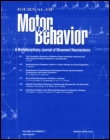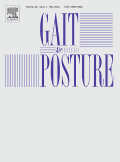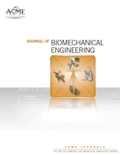
HUMAN MOVEMENT SCIENCE
Scope & Guideline
Unraveling the Complexities of Human Motion.
Introduction
Aims and Scopes
- Motor Control and Learning:
Research on the mechanisms of motor control, learning, and adaptation in various contexts, including the influence of cognitive factors on motor performance. - Clinical and Rehabilitation Sciences:
Investigations into movement impairments and rehabilitation strategies for populations with neurological and orthopedic conditions, emphasizing functional outcomes and quality of life. - Biomechanics and Kinematics:
Studies examining the mechanical aspects of human movement, including gait analysis, postural control, and the effects of different perturbations on stability. - Developmental Coordination:
Exploration of motor development across the lifespan, particularly in children with developmental coordination disorders and their implications for physical activity. - Cognitive-Motor Interactions:
Research on the interplay between cognitive processes and motor tasks, particularly in dual-task scenarios and their implications for balance and mobility.
Trending and Emerging
- Dual-Task and Cognitive Load Effects:
An increasing focus on how cognitive load and dual-tasking affect motor performance, particularly in older adults and clinical populations, highlights the importance of cognitive factors in movement science. - Technology-Enhanced Movement Analysis:
The integration of virtual reality, augmented reality, and advanced motion capture technologies is becoming more prevalent, allowing for nuanced analyses of movement in controlled yet immersive environments. - Neuroplasticity and Motor Rehabilitation:
Emerging research on neuroplasticity in response to motor rehabilitation techniques underscores the relevance of understanding brain-behavior relationships in recovery from movement disorders. - Environmental and Contextual Influences on Movement:
A growing interest in how environmental factors, such as visual and auditory cues, affect motor performance and learning indicates a trend towards more ecologically valid research. - Multisensory Integration in Motor Control:
Studies exploring how different sensory modalities interact to influence motor control are gaining momentum, reflecting a more holistic view of human movement.
Declining or Waning
- Traditional Sports Biomechanics:
While biomechanics remains a core area, the focus on traditional sports biomechanics has decreased as more integrative approaches that consider cognitive and environmental factors gain traction. - Basic Motor Skill Acquisition:
Research specifically targeting basic motor skill acquisition in isolation is less frequent, as there is a trend toward understanding motor skills in more complex, real-world contexts. - Static Balance Assessment:
The emphasis on static balance assessments has waned in favor of dynamic assessments that consider real-life challenges and dual-tasking scenarios.
Similar Journals

MOVEMENT DISORDERS
Advancing the Frontiers of Neurological ResearchMOVEMENT DISORDERS, published by Wiley, stands as a premier outlet for cutting-edge research in the field of neurology, particularly focusing on the various aspects of movement disorders. With both its ISSN (0885-3185) and E-ISSN (1531-8257) identifiers, this journal is at the forefront of neurological research, holding a remarkable impact factor and recognized in the top quartiles (Q1) of the disciplines of Neurology and Clinical Neurology as of 2023. The journal boasts an impressive Scopus ranking, placing it in the top 8 out of 192 for Neuroscience-Neprology and 19 out of 400 for Medicine-Clinical Neurology, reflecting its high relevance and influence in the field. Released quarterly since its inception in 1986 and continuing through 2024, MOVEMENT DISORDERS publishes a mix of original research articles, reviews, and case reports that catalyze innovation and foster collaboration among researchers, healthcare professionals, and students dedicated to understanding and treating movement disorders. As a non-open access journal, it nevertheless offers valuable insights that are essential for the advancement of knowledge in neurology, making it a critical resource for anyone invested in this challenging and evolving field.

JOURNAL OF MOTOR BEHAVIOR
Unraveling the Science Behind Motor BehaviorJOURNAL OF MOTOR BEHAVIOR, published by Routledge Journals, Taylor & Francis Ltd, is a leading platform that explores critical insights into the dynamics of motor functions and behavior across various disciplines including biophysics, cognitive neuroscience, and sports science. With an ISSN of 0022-2895 and an E-ISSN of 1940-1027, this journal has been a vital resource since its inception in 1969, offering a comprehensive analysis of motor control, skill acquisition, and the neural mechanisms underlying motor performance. Positioned in the Q3 quartile across multiple categories for 2023, it ranks competitively within its fields, such as #136 in Orthopedics & Sports Medicine and #95 in Experimental & Cognitive Psychology. JOURNAL OF MOTOR BEHAVIOR serves not only as an essential reference for researchers and professionals but also as an invaluable resource for students pursuing studies in motor behavior and related areas, reflecting the ongoing evolution and significance of this field in enhancing our understanding of human movement and performance.

GAIT & POSTURE
Pioneering Insights in Human Movement and Sports MedicineGAIT & POSTURE is a premier international journal, published by Elsevier Ireland Ltd, that serves as a crucial platform for researchers, clinicians, and students in the domains of biomechanics, rehabilitation, and sports medicine. With an impact factor reflecting its esteemed position, GAIT & POSTURE covers innovative research and advancements regarding human movement, balance, and postural control, contributing significantly to enhancing clinical practices and understanding in the fields of Biophysics, Orthopedics, and Sports Science. Since its inception in 1993, the journal has consistently maintained high standards as evidenced by its categorization in Q1 for Rehabilitation and Q2 for Biophysics and Orthopedics in the 2023 quartiles. The journal's robust metrics, including its rank in multiple Scopus categories, underscore its impact and visibility in the academic community.

MHSalud-Revista en Ciencias del Movimiento Humano y la Salud
Bridging research and practice for a healthier future.MHSalud-Revista en Ciencias del Movimiento Humano y la Salud is a prominent open-access journal published by the UNIV NAC, ESCUELA CIENCIAS DEPORTE in Costa Rica since 2004, dedicated to advancing research in the fields of human movement sciences and health. With an ISSN of 1659-097X, this journal serves as a vital platform for the dissemination of innovative findings related to biomechanics, rehabilitation, sports medicine, and public health. Although it currently holds a Q4 classification across various relevant categories such as Biophysics and Orthopedics, the journal is committed to fostering scholarly communication and bridging the gap between research and practice in these critical areas. The accessible nature of its content allows both seasoned researchers and emerging scholars to engage with research findings, while its focus on diverse health topics ensures its relevance in a rapidly changing academic landscape. As the journal continues to evolve through 2024 and beyond, it remains a crucial resource for professionals, students, and academics aiming to contribute to the understanding and improvement of human health and movement.

Acta Kinesiologica
Pioneering excellence in kinesiology research.Acta Kinesiologica is a distinguished journal dedicated to advancing the fields of kinesiology and health sciences. Published by the DRUSTVO PEDAGOGA TJELESNE & ZDRAVSTVENE KULTURE, this journal serves as a vital platform for researchers, professionals, and students to disseminate and engage with innovative findings in physical education, exercise science, and health promotion. With the ISSN 1840-2976 and E-ISSN 1840-3700, Acta Kinesiologica highlights contemporary research methodologies and interdisciplinary approaches that aim to enhance human movement and well-being. Although currently not an open-access journal, it is recognized for its commitment to quality and scholarly excellence. Researchers from around the globe benefit from its rigorous peer-review process, which ensures that only the most relevant and impactful studies are published. As the journal continues to evolve, it remains an essential resource for those seeking to expand their knowledge and contribute meaningfully to the scientific community in kinesiology and related disciplines.

JOURNAL OF BIOMECHANICAL ENGINEERING-TRANSACTIONS OF THE ASME
Bridging Engineering and Biology for a Healthier FutureJOURNAL OF BIOMECHANICAL ENGINEERING-TRANSACTIONS OF THE ASME, published by the esteemed ASME (American Society of Mechanical Engineers), has been a leading platform for scholarly communication in the fields of biomedical engineering and physiology since its inception in 1977. With a focus on advancing the understanding of the mechanics of biological systems, this journal serves as an invaluable resource for researchers, professionals, and students alike. Despite its current 2023 quartile ranking of Q3 in both Biomedical Engineering and Physiology (Medical), it provides a critical forum for innovative research and comprehensive reviews that contribute to ongoing developments in biomechanical engineering. The journal's contributions span a wide array of topics, reinforcing its significance in bridging the gap between engineering principles and biological applications, thus fostering interdisciplinary research aimed at enhancing human health. The journal is accessible in both print and electronic formats, ensuring wide dissemination of its impactful findings.

EXPERIMENTAL BRAIN RESEARCH
Pioneering Research for a Deeper Insight into NeurologyEXPERIMENTAL BRAIN RESEARCH is a renowned journal published by SPRINGER, dedicated to advancing understanding in the field of neuroscience. With a history dating back to 1966, this journal offers valuable insights into the mechanisms of brain function and neurological disorders, making it a vital resource for researchers, professionals, and students alike. While it currently holds a Q3 classification in the field of Neuroscience (miscellaneous) and ranks #73 out of 113 in Scopus's General Neuroscience category, it continually contributes to fostering innovative research and collaborative dialogue. The journal is not open access, ensuring that although content is subscription-based, it maintains a high standard of peer review and scholarly rigor. By covering a breadth of topics relevant to both experimental and theoretical aspects of brain research, EXPERIMENTAL BRAIN RESEARCH serves as an essential platform for disseminating cutting-edge discoveries and theories in the dynamic realm of neuroscience.

REHABILITATION
Empowering Professionals with Cutting-Edge ResearchREHABILITATION is a leading peer-reviewed journal published by GEORG THIEME VERLAG KG, dedicated to advancing the field of rehabilitation. With a rich history dating back to 1972 and converging into 2024, this journal plays a pivotal role in disseminating high-quality research that addresses critical challenges in rehabilitation science and practice. Although it is currently categorized in the third quartile (Q3) of the Rehabilitation category for 2023, its contribution is essential for professionals and researchers striving to improve therapeutic strategies and patient outcomes. The journal strives to publish original research, comprehensive reviews, and insightful commentaries that challenge current paradigms and inspire further inquiry in the field. To remain competitive and relevant, REHABILITATION continually seeks to elevate its global impact, making it a valuable resource for academics and practitioners alike, despite its current Scopus rank of #110 out of 161 in the Medicine _ Rehabilitation category. Located in Stuttgart, Germany, it serves as a crucial platform where innovative ideas and methodologies are shared amongst the international rehabilitation community.

PSYCHOLOGICAL RESEARCH-PSYCHOLOGISCHE FORSCHUNG
Advancing psychological science through interdisciplinary insights.Psychological Research – Psychologische Forschung is a renowned interdisciplinary journal published by Springer Heidelberg, operating from Germany. As a key publication in the field of psychology, particularly spanning areas such as experimental and cognitive psychology, developmental and educational psychology, and arts and humanities, this journal has made significant contributions to the advancement of psychological science since its inception in 1974. With an impressive impact reflected through its Q1 and Q2 categorizations across various fields, it occupies a prominent position in Scopus rankings, notably ranked #35 in Experimental and Cognitive Psychology. Researchers, professionals, and students alike benefit from its rich repository of original empirical studies, reviews, and methodological advancements. Whether you're seeking to contribute to your field or stay abreast of the latest developments, Psychological Research provides a crucial platform for disseminating innovative psychological knowledge. With a convergence of research years leading to 2024, the journal continues to evolve, maintaining its relevance and excellence within the academic community.

European Journal of Human Movement
Connecting Scholars to Transform Physical HealthThe European Journal of Human Movement, published by the University of Extremadura, Faculty of Sports Sciences in Spain, stands as a vital resource within the realms of Health, Physical Therapy, and Social Sciences. With its consistent commitment to Open Access since 2014, the journal facilitates the dissemination of high-quality research, fostering innovation and collaboration among scholars, practitioners, and students alike. The journal has carved out a niche in its categories, being ranked in the Q3 quartile across several fields, including Health (social science) and Physical Therapy, Sports Therapy, and Rehabilitation. With an ongoing publication timeline extending from 2019 to 2024, it aims to highlight contemporary issues, emerging trends, and groundbreaking studies within human movement sciences. Additionally, with its presence in the Scopus ranking and a determination to elevate research standards, the journal remains an essential platform for sharing knowledge and advancing professional practice in a rapidly evolving landscape.